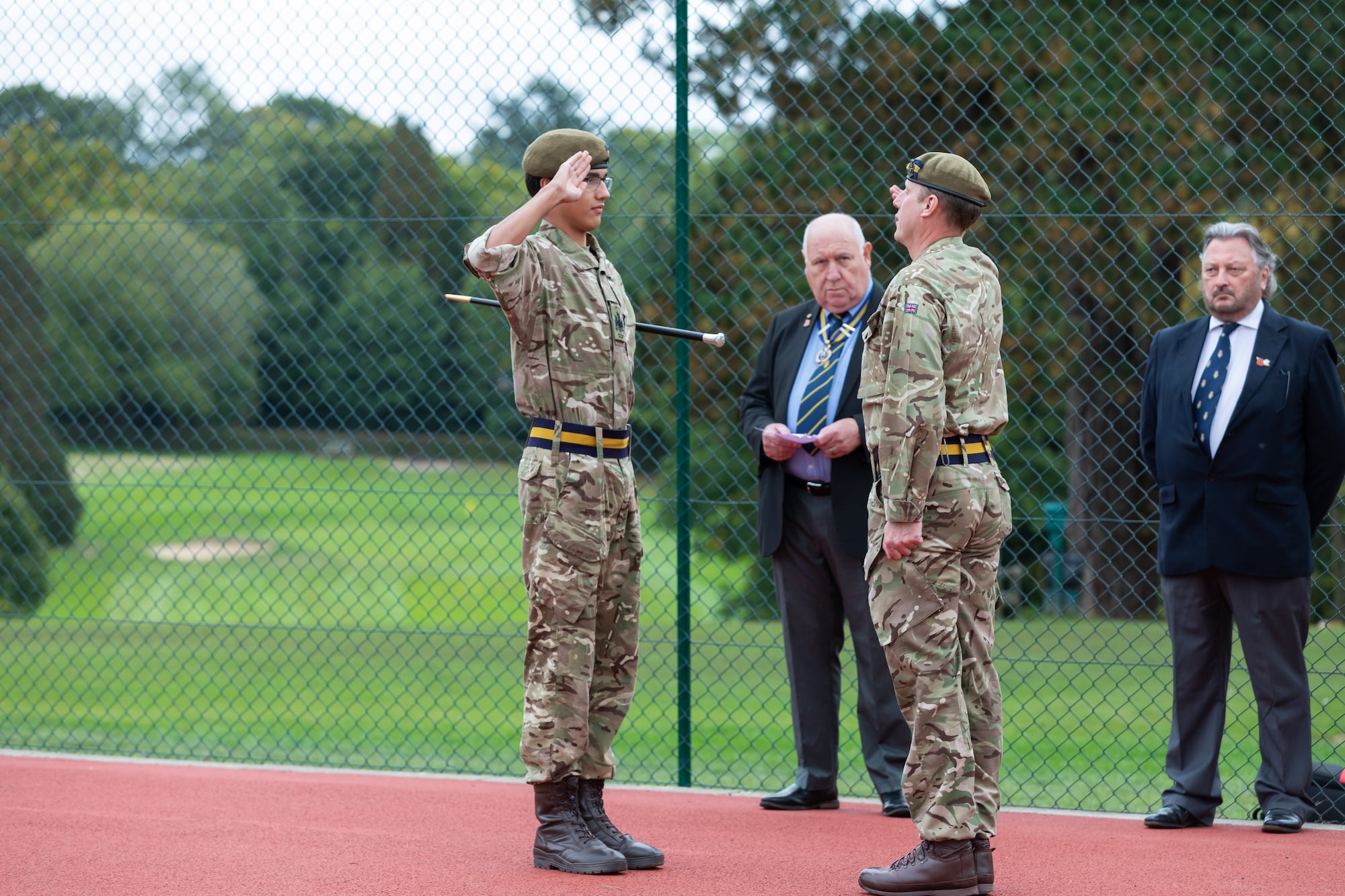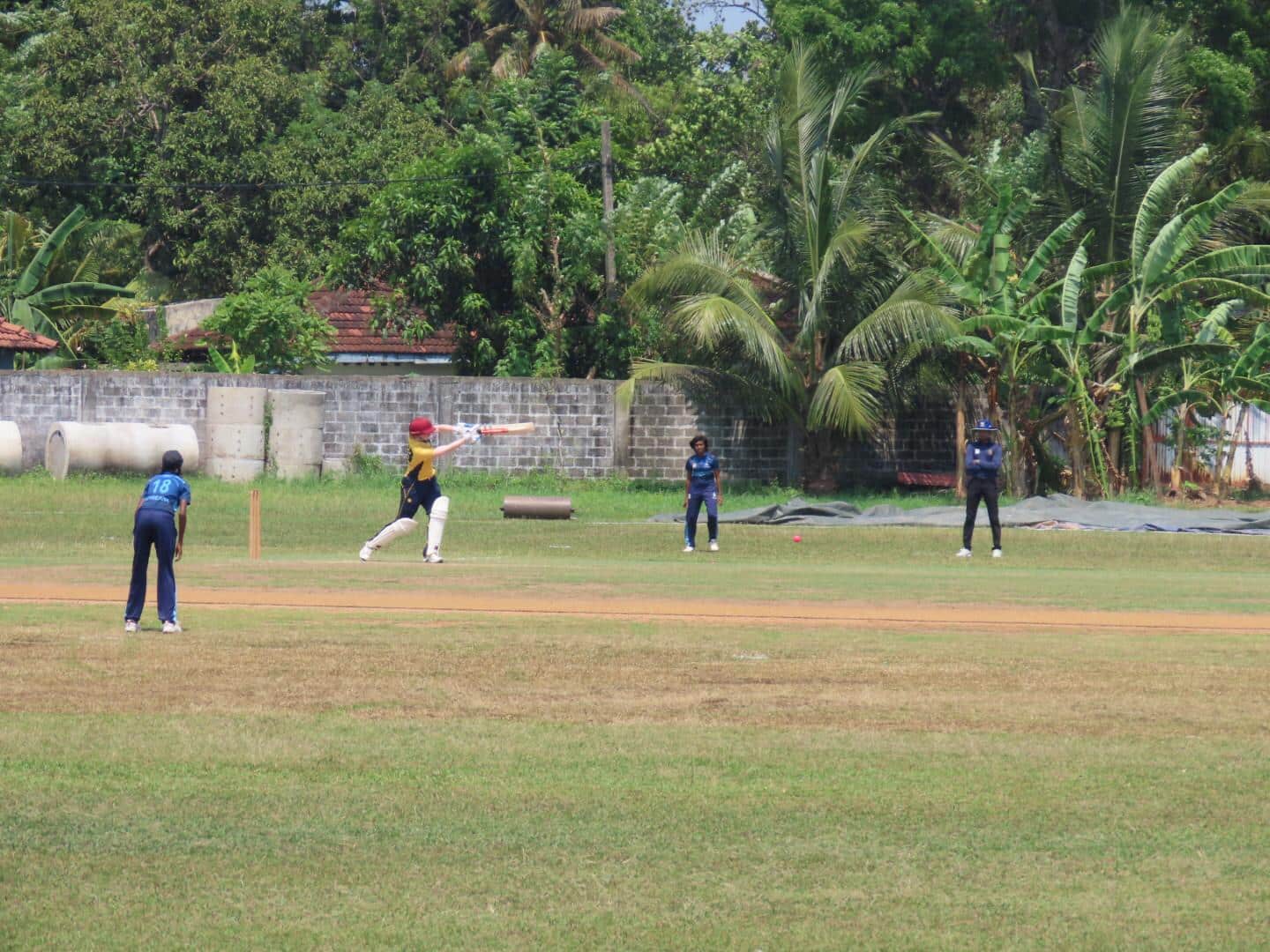 Trying to describe the effect his own unique brand of theatre had on its audience, the author of En Attendant Godot noted “it’s a disease” to his lover in 1953. There is no doubt that anyone fortunate enough to see the highly ambitious UVIth production of the “Short Plays by Samuel Beckett” (put on last week in the VCT) was sure to repeat these strange creations over and over again in their heads long after they left the theatre, like a disorder of the senses. Members of the audience were at times startled, moved and alienated by the weird insidiousness and haunting lyricism of the four shorts: Play, Catastrophe, Come and Go and Krapp’s Last Tape. In his useful prefatory note on Beckett and the plays, the director, Mr James Copp, is quick to reassure his audience that feelings of crazy bafflement, estrangement and even rejection may well be part of the theatrical experience: “Like a Jackson Pollock painting, some of the plays are just a beautiful mess”, he notes, continuing, “Everyone should feel free to not enjoy them…”It was this freedom of experience and expression that made this run of plays such an affecting tribute to the tragi-comic potential of the human condition in all its rich and dark variety.
Trying to describe the effect his own unique brand of theatre had on its audience, the author of En Attendant Godot noted “it’s a disease” to his lover in 1953. There is no doubt that anyone fortunate enough to see the highly ambitious UVIth production of the “Short Plays by Samuel Beckett” (put on last week in the VCT) was sure to repeat these strange creations over and over again in their heads long after they left the theatre, like a disorder of the senses. Members of the audience were at times startled, moved and alienated by the weird insidiousness and haunting lyricism of the four shorts: Play, Catastrophe, Come and Go and Krapp’s Last Tape. In his useful prefatory note on Beckett and the plays, the director, Mr James Copp, is quick to reassure his audience that feelings of crazy bafflement, estrangement and even rejection may well be part of the theatrical experience: “Like a Jackson Pollock painting, some of the plays are just a beautiful mess”, he notes, continuing, “Everyone should feel free to not enjoy them…”It was this freedom of experience and expression that made this run of plays such an affecting tribute to the tragi-comic potential of the human condition in all its rich and dark variety.
From the first, the audience was plunged into the surreal Dali-esque world of Beckett’s imagination, where logic and any preconceptions about plot, character and theatre were quickly abandoned. Out of the darkness emerged three large urns, beautifully sculpted by Tom Barnett, standing side by side, like ethereal statues, lit up by a queer greenish light. The atmosphere created by this visual spectacle was at once sombre and disquieting. Three funeral garlands were removed ceremoniously from the urns, marking the beginning of the first short entitled simply, Play. Out of these urns appeared the disembodied heads of M, W1 and W2, played by Luke Boyd, Scarlett Rudd and Izzie Simpkin respectively.
 The audience were then blasted by white noise as all three actors spoke simultaneously, words as bullets – rapid-fire and frantic – rather than purveyors of meaning. This set the tone for the rest of the play which slowly transformed from an unintelligible “beautiful mess” of sound into a disconcertingly incomprehensible domestic drama that spewed forth in fragments from the mouths of its perpetrators. Particularly impressive here was the actors’ ability to enunciate even at the “rapid tempo” prescribed by the playwright in the stage direction. There was no doubt that the acting in this piece was superb. No one could fail to notice Izzie’s piercing eyes: her wonderfully expressive face leant a cracked intensity to her often crazed lines – particularly notable was the mechanical turn of her head towards M after delivering the line, “Am I not perhaps a little unhinged already”. Scarlett was splendid as the long-suffering wife, her acerbic slant on the lines “Pudding face, puffy, spots, blubber mouth, jowls, no neck” and “Calves like flunkey-” communicating W1’s fierce contempt for W2. Luke, too, was convincing as a weak-willed man caught between two slightly terrifying women: his beautifully ‘toneless’ delivery attested to Beckett’s vision of emotional vacuity. This culminated in the line “Am I as much as … being seen?”, pitched perfectly to arouse in the audience a curious mixture of fear and puzzlement at the thought of selfhood being so tragically bound up in appearances.
The audience were then blasted by white noise as all three actors spoke simultaneously, words as bullets – rapid-fire and frantic – rather than purveyors of meaning. This set the tone for the rest of the play which slowly transformed from an unintelligible “beautiful mess” of sound into a disconcertingly incomprehensible domestic drama that spewed forth in fragments from the mouths of its perpetrators. Particularly impressive here was the actors’ ability to enunciate even at the “rapid tempo” prescribed by the playwright in the stage direction. There was no doubt that the acting in this piece was superb. No one could fail to notice Izzie’s piercing eyes: her wonderfully expressive face leant a cracked intensity to her often crazed lines – particularly notable was the mechanical turn of her head towards M after delivering the line, “Am I not perhaps a little unhinged already”. Scarlett was splendid as the long-suffering wife, her acerbic slant on the lines “Pudding face, puffy, spots, blubber mouth, jowls, no neck” and “Calves like flunkey-” communicating W1’s fierce contempt for W2. Luke, too, was convincing as a weak-willed man caught between two slightly terrifying women: his beautifully ‘toneless’ delivery attested to Beckett’s vision of emotional vacuity. This culminated in the line “Am I as much as … being seen?”, pitched perfectly to arouse in the audience a curious mixture of fear and puzzlement at the thought of selfhood being so tragically bound up in appearances.
 I should say that there were really four actors in this domestic drama: Luke, Scarlet, Izzie and Anna Forrester (Lighting and Sound Operator). In the script’s stage direction, M, W1 and W2 are described as “victims” of the light; for this tragic sense to be achieved, a great deal depends upon the operator’s control of light and darkness both in terms of intensity and timing. Testifying to the skill of Anna Forrester, the quick-fire exchange of spotlights on the faces of the three actors (prompting them to speak their stream of fragmented monologue) was handled masterfully, with never a moment’s hitch or uncertainty.
I should say that there were really four actors in this domestic drama: Luke, Scarlet, Izzie and Anna Forrester (Lighting and Sound Operator). In the script’s stage direction, M, W1 and W2 are described as “victims” of the light; for this tragic sense to be achieved, a great deal depends upon the operator’s control of light and darkness both in terms of intensity and timing. Testifying to the skill of Anna Forrester, the quick-fire exchange of spotlights on the faces of the three actors (prompting them to speak their stream of fragmented monologue) was handled masterfully, with never a moment’s hitch or uncertainty.
The physical demands that Samuel Beckett’s plays make of their actors are considerable indeed. As in Play where the three performers coped admirably with standing inside giant urns, cabined, cribbed and confined to the last moment; in Catastrophe (the second of the shorts), Luke Boyd as the ironically-named “Protagonist” was obliged to remain motionless, head-lowered in supplication, hands balled into fists for almost the entire duration of the piece – a spectacular feat of endurance and self-control in itself. It is only in the final few seconds of the play that he is permitted to lift his head to the audience, only for the stage to be plunged into darkness. The expression on Luke’s face, though only glimpsed for a moment by the audience, was truly captivating – to borrow Beckett’s phrase, it captured the ‘anguish of perceivedness’ (a theme that weaves all four shorts together), and transformed this intelligent comedy of meta-theatricality and artifice (wittily brought to life by Bea Stephenson as the endearingly put-upon foreign Assistant and Bruno Broughton as the autocratic and egocentric Director) into pure tragedy; tragedy in George Steiner’s sense of the word: ‘tragedy as epiphany’.
Next came the third ‘dramaticule’ of the evening; “Come and Go”, perhaps one of Beckett’s most perfect of plays. As the lights came up, the audience were met by a vision of three figures dressed in oversized coloured coats, their faces overshadowed by large hats, sitting quietly on a narrow bench-like seat surrounded by darkness. It becomes clear over the course of the play that Vi, Flo and Ru (played by Izzie Simpkin, Bea Stephenson and Scarlett Rudd) are former childhood friends who once attended “Miss Wade’s” together and sitting side by side in this manner is something they used to do in the playground back then. All three young actresses delivered their lines with a mature sensitivity beyond their years. Izzie’s charged delivery of Vi’s opening line “When did we three last meet?” was so hauntingly mysterious as to dreamily call to mind the three Witches of Shakespeare’s Macbeth (“When shall we three meet again?”). The real triumph of this piece, however, was the visceral, almost slapstick nature of the comedy on display. All three actresses showed off their talent by capturing the physical impotency of old age; Bea’s interpretation of Flo as an extremely doddery and rather batty geriatric was met with uproarious laughter from all sides of the audience.
The final piece of the evening, and perhaps the most demanding of the audience in its repetitiousness and lack of plot, was the one act masterpiece, Krapp’s Last Tape. The exceptionally talented Adam Van Schaik took to the stage as Krapp, a wild-haired older gentleman with an air of the desperate and unhinged about him. He blinks mole-like into the darkened auditorium and then into the scattered boxes of recordings of times forgotten and times past – we imagine he senses the intensity of our gaze – and he knows he must give one final performance before he, like us, is swallowed up by the darkness.
 What follows is a haunting and lyrical interweaving of tape recordings of Krapp’s younger self and Krapp as he stands before us now. These recordings, we discover, are poetic acts of self-preservation against the reality of keenly felt isolation – he listens to himself for company in the darkness of his home – these spools of nostalgia represent Krapp’s fierce defence of an obviously precarious identity. Like Byron’s Prometheus, Krapp is a “man in portions [able to] foresee / His own funereal destiny; / His wretchedness, and his resistance, /And his sad unallied existence”. Adam’s acting is really quite remarkable here: one moment his face, banana stoppered, and eyes, wide and emptied of mind, are the very embodiment of Absurdist theatre, and the next, slumped in his chair he is a kind of Lear, utterly destroyed. The brilliance of Adam’s acting lies in his vocal range: he can move seamlessly from a voice sharpened shrill in voyeuristic delight to one black with fury; from guttural utterances heavy with self-derision to barely audible sighs charged with sadness. This performance taken in its entirety was a heart-breaking, elegiac response to the tragedy of old age as it tightens its hold on all of us.
What follows is a haunting and lyrical interweaving of tape recordings of Krapp’s younger self and Krapp as he stands before us now. These recordings, we discover, are poetic acts of self-preservation against the reality of keenly felt isolation – he listens to himself for company in the darkness of his home – these spools of nostalgia represent Krapp’s fierce defence of an obviously precarious identity. Like Byron’s Prometheus, Krapp is a “man in portions [able to] foresee / His own funereal destiny; / His wretchedness, and his resistance, /And his sad unallied existence”. Adam’s acting is really quite remarkable here: one moment his face, banana stoppered, and eyes, wide and emptied of mind, are the very embodiment of Absurdist theatre, and the next, slumped in his chair he is a kind of Lear, utterly destroyed. The brilliance of Adam’s acting lies in his vocal range: he can move seamlessly from a voice sharpened shrill in voyeuristic delight to one black with fury; from guttural utterances heavy with self-derision to barely audible sighs charged with sadness. This performance taken in its entirety was a heart-breaking, elegiac response to the tragedy of old age as it tightens its hold on all of us.
In short, beautiful and inspiring work from all involved.
HRFW












